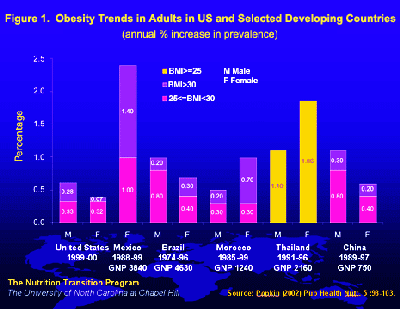CECHE  Center for Communications, Health and the Environment
Center for Communications, Health and the Environment
 Center for Communications, Health and the Environment
Center for Communications, Health and the Environment 
Can a New Diet-Exercise Paradigm
Combat The Chronic-Disease Pandemic?
Combat The Chronic-Disease Pandemic?

Return to the Monitor front Page
For more information on CECHE and its programs visit CECHE's Homepage

CECHE Chairman Sushma Palmer Comments on This Quarter's Topics

Action, not Reports, Needed to Reverse Diet, Nutrition Woes

 The
"5 A Day" Campaign: Are Americans Listening?
The
"5 A Day" Campaign: Are Americans Listening? Sedentarism
Runs Rampant Worldwide
Sedentarism
Runs Rampant Worldwide
 South
Indian Reproductive Health Tied to Cultural Roots
South
Indian Reproductive Health Tied to Cultural Roots Democracy
and Health Go Hand in Hand
Democracy
and Health Go Hand in Hand
 Guidelines
Dictate Lifestyle Changes for Americans
Guidelines
Dictate Lifestyle Changes for Americans WHO
Is Central to Fighting NCDs
WHO
Is Central to Fighting NCDsDownload a complete Monitor (PDF)
by Barry M. Popkin, Professor of Nutrition, Department of Nutrition, School of Public Health and School of Medicine, University of North Carolina, Chapel Hill
 Both
developing and industrialized countries are battling obesity.
Both
developing and industrialized countries are battling obesity. The Nutrition Transition
Urban dwellers have vastly different lifestyles than rural residents. And their alternate patterns of food demand and time allocation have an enormous effect on diet, physical activity and overall health.
- The urban diet. Urban residents obtain a much higher proportion of energy from fats and sweeteners, and eat greater amounts of animal products than do rural residents, even in the poorest areas of low-income countries. In China, for example, 38.2 percent of the energy intake of urban adults is derived from fat, compared to 18.7 percent for rural adults. Urbanites consume a more diversified diet, and more micronutrients and animal proteins than rural residents, but they also have a considerably higher intake of refined carbohydrates, processed food, and saturated and total fat, as well as a lower intake of fiber.
- Physical activity patterns. New technologies impacting work and leisure, together with shifting diets, have enhanced obesity in urban areas. Body composition has changed in tandem with the transformation of a pre-industrial agrarian economy into an industrial, urban one. Urban occupations now require shorter workdays, and less physical exertion and activity. More than 54 percent of urban, but only 25.5 percent of rural Chinese women aged 20 to 45, for example, have occupations that require light-energy expenditure. Leisure activities have not only become more abundant, but also more sedentary, particularly with the penetration of mass media into the developing world. Almost all Chinese households, for instance, owned at least one working television set by 1997.
- The obesity epidemic. Changes in diet and physical activity have accelerated obesity rates in the developing world. In many cases, historically agrarian lower- and middle-income countries such as Egypt, South Africa and Mexico report overweight levels matching those of the United States -- and exceeding those of most European countries. Obesity levels are much higher in urban areas. In Indonesia and China, obesity among adults is twice as prevalent in urban as in rural areas; in the Congo, it is almost six times more prevalent. In general, the Middle East, Western Pacific and Latin America have far higher levels of obesity than other developing regions. In Figure 1, we show the annual rate of change in overweight levels and obesity among men and/or women in selected countries, including the United States, Mexico, China, Brazil, Thailand and Morocco. The rate of change is extremely high in many regions of the world.
Diabetes is one critical scourge associated with the obesity epidemic and its corresponding dietary and physical activity patterns. In the United States, Mexico, many Latin American nations, the Middle East and the former Soviet Union, 6 to 10 percent of the adult population has diabetes. Several studies also show that many cardiovascular diseases related to obesity and non-insulin-dependent diabetes mellitus, such as hypertension and atherosclerosis, are increasing rapidly. More recently, cancer rates have begun to escalate worldwide. In China, cancer- and cardiovascular disease-related deaths are increasing fast enough to offset the reductions in infectious disease deaths, as well as to account for increases in total mortality rates.
The Future
Prevention is the only feasible approach to obesity, because the cost of treatment and management imposes an intolerable economic burden on developing countries. There is, therefore, an urgent need for governments, in partnership with health professionals, nongovernment organizations and the food industry, among others, to integrate strategies to promote healthful diets and regular physical activity into policies and programs, including those designed to combat undernutrition. An effective course of action must include community empowerment and support to overcome the environmental, social and economic constraints to improve dietary quality and reduce sedentarism. Finland and Norway, for example, succeeded in reversing extremely high levels of nutrition-related chronic diseases over a relatively short period through comprehensive food policy and community involvement. With effective public-private partnerships, less developed countries can begin to do the same. [back to front....]
© 2003 CECHE